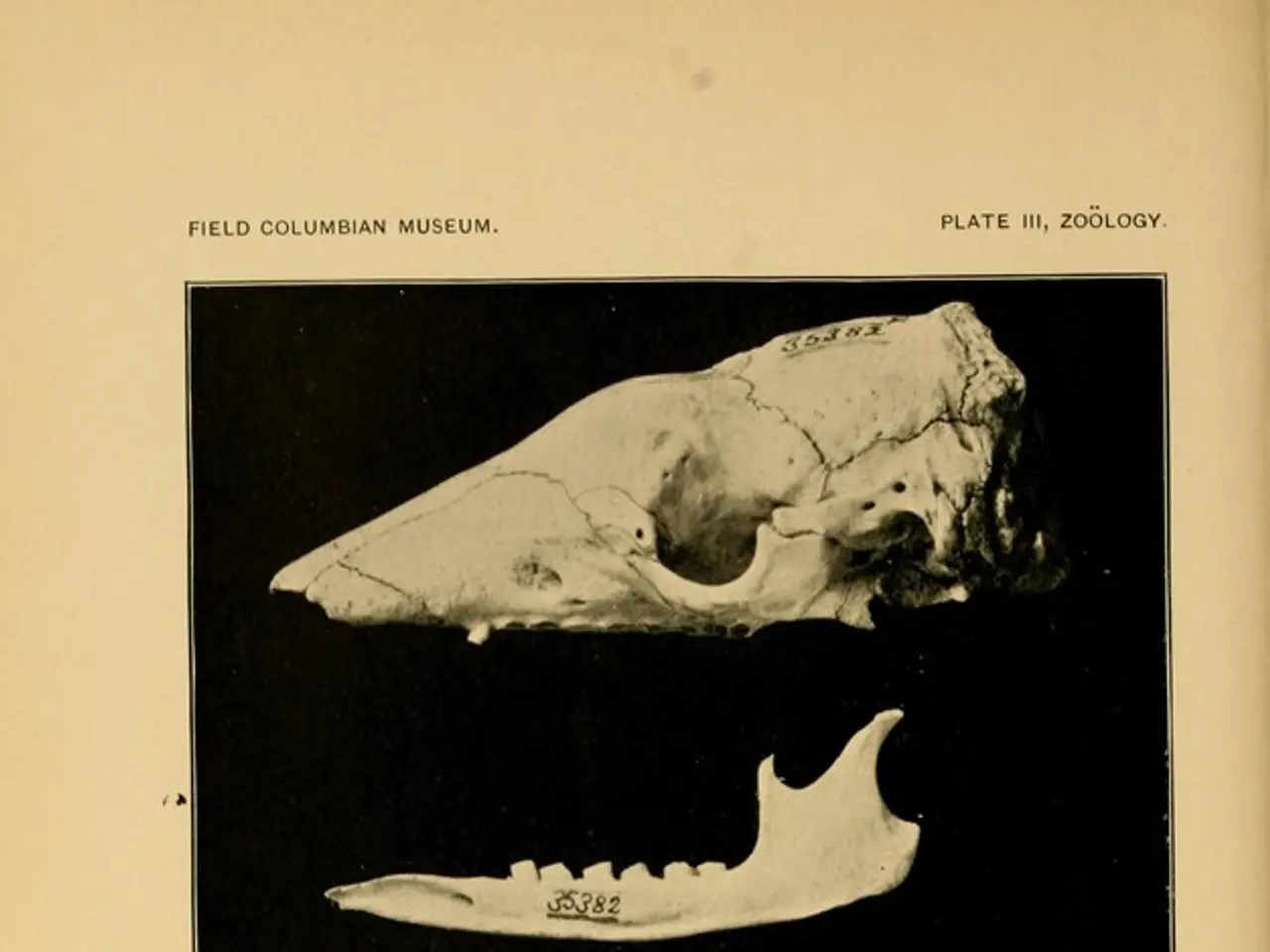Connection between Messenger RNA and Amino Acids in Protein Production (Assembly)
The process of protein synthesis is a complex dance involving various players, one of which is the anticodon. This tiny structure, found on transfer RNA (tRNA), plays a crucial role in ensuring the correct sequence of amino acids is assembled during protein production.
The anticodon acts as a key adapter, translating the genetic code in messenger RNA (mRNA) into the correct sequence of amino acids during translation. Each codon on the mRNA specifies a particular amino acid. The anticodon on the tRNA recognises and binds to this codon through complementary base pairing (A pairs with U, and G pairs with C). This precise codon-anticodon interaction ensures that the amino acid attached to the tRNA is added in the correct order as dictated by the mRNA sequence.
The ribosome, a crucial part of protein synthesis, facilitates this pairing and catalyses the formation of peptide bonds between amino acids, building the protein. The wobble hypothesis, a significant factor in maintaining flexibility in the translation process, allows some flexibility in the base pairing between mRNA codons and tRNA anticodons at the third position.
Aminoacyl tRNA synthetases are enzymes that act as matchmakers in protein synthesis, ensuring that each amino acid ends up in its rightful place in the growing protein chain. These enzymes recognise a particular amino acid and find its perfect tRNA match, the one carrying the complementary anticodon.
The genetic code is translated into proteins through a process called translation, which involves initiation, elongation, and termination stages. During elongation, the ribosome reads the mRNA codons one by one, using them to assemble the correct sequence of amino acids into a protein chain.
Each tRNA is specifically paired with a particular amino acid. The wobble hypothesis allows tRNA with a different base in the third position of the anticodon to still match codons with a different base in the third position of the codon, providing some flexibility in the translation process.
In summary, the anticodon, aided by the ribosome and aminoacyl tRNA synthetases, plays a pivotal role in the intricate process of protein synthesis. It ensures the correct sequence of amino acids is assembled, translating the genetic code in the mRNA into the correct sequence of amino acids, thereby ensuring accurate protein synthesis.
Science continues to uncover the intricacies of medical-conditions and space-and-astronomy, even elucidating the fundamental process of protein synthesis. The role of technology, such as advanced microscopy and bioinformatics, is indispensable in this exploration, allowing researchers to decode the complex dance between codons, anticodons, tRNA, and the ribosome.




